How to Handle Moth Damage

Moth damage is never pleasing to uncover. In fact, finding holes in your clothes from moths can be disappointing, stressful, and downright unnerving. After all, no one wants insects nesting in their home and gnawing through their belongings! Although many types of moths are harmless and will not damage your clothes or upholstery, certain types of moths can wreak havoc inside your house. Knowing what kind of moths cause damage to foods, fabrics, and furniture is key. That way, you can keep disgusting little moths out of your life and away from your cutest winter outfits or seasonal throw blankets.
Nevertheless, if you find that moths have desecrated your belongings, not all hope is lost. There are some very effective ways to handle (and maybe even fix) moth damage. From there, many other useful measures can be taken to prevent moths from infesting your home in the future.
In this helpful guide, we will cover absolutely everything you could ever want to know about identifying pestilent moths, handling moth damage to your belongings, preventing further deterioration from occurring, and taking defensive measures against moths. Before you know it, you will be a moth expert! Then, handling these pesky little insects will no longer be a source of stress in your life.
What Damage Can Moths Cause?
To be sure, moths can cause all kinds of issues. The extent of damage and deterioration you have to fix will depend on the species of moth you are dealing with. Apart from fluttering into your face and being generally annoying,some moths can actually cause genuine harm to items of clothing, furniture, carpets, material items, textiles, food, and even your house itself. It all depends on the type of moth plaguing you. There are two common species of pestilent moths, Clothes Moths and Pantry Moths. Clothes Moth Larvae will eat through any textiles or clothing that contain animal based fibres.
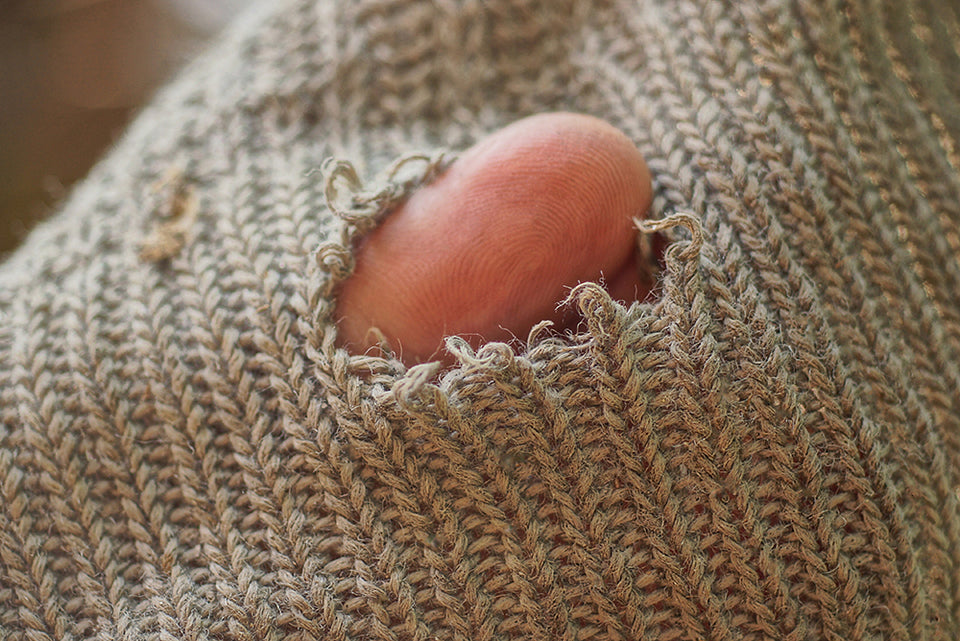
As larvae, these kinds of moths can:
- Destroy clothing items
- Destroy furniture items
- Damage upholstery
- Eat through drapes and carpets
- Eat through decor items
- Put holes everywhere in clothing items
- Entirely destroy some fabrics beyond repair
- Eat through pantry goods (in the case of Pantry Moths)
- Cost you a lot of money, overall
Moth Damage 101: The Basics
First off, let's talk about what kinds of moths cause the most damage and what kind of harm they tend to inflict. In most cases, field moths, garden moths, and other types of non-pestilent moths aren't an issue. Generally, these moths fly into your house because they are attracted to lights or are in search of dry places to hide. Apart from being annoying and maybe a little bit creepy, they won't hurt you or your belongings. Many are even good pollinators! If released back outside, that will often be the end of things.
In the Midwest and North Western United States, some moths also migrate in the spring and summer. These migrating moths won’t damage your home, although they can still be really annoying. They may, however, harm your crops if you happen to be a farmer in the Midwest. Either way, for most of us, these aren't the species of moths to worry about. The moths that should be taken seriously are Clothes Moths and Pantry Moths, which are not attracted to light, but to dark, undisturbed corners of the home.
Clothes Moth Larvae eat their way through textile items in the larval stage, leaving holes in materials or even shredding them beyond repair. Pantry Moth Larvae eat exposed grains and stored foods, leaving waste behind as well as dead larvae and eggs. Sometimes, moth damage can be remedied. Other times, it is best to discard damaged items. Keep reading to learn what to toss, what to fix, and much more!
About Clothes and Carpet Moths (The Basics)
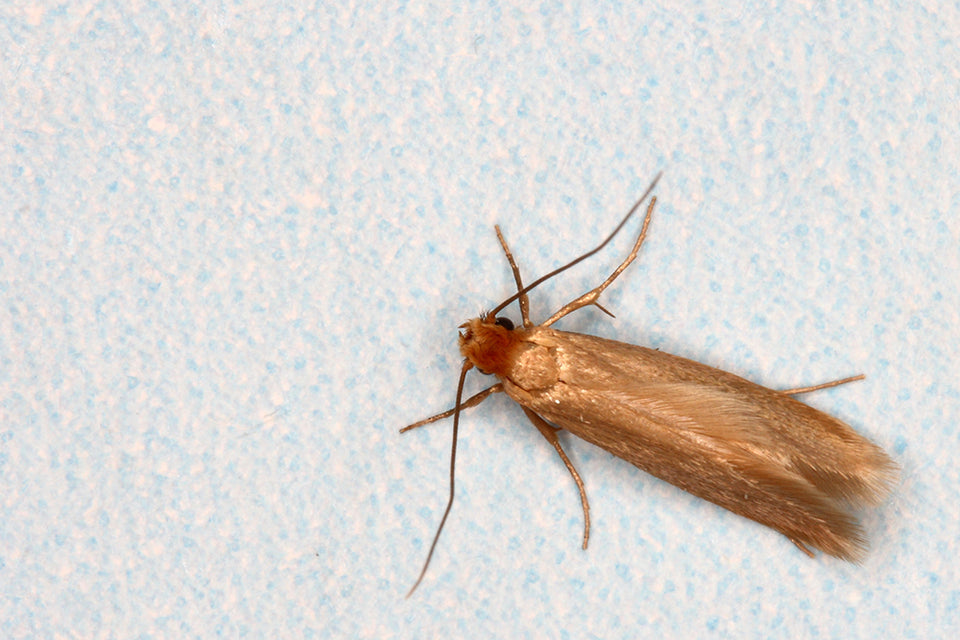
Clothes and Carpet Moth Larvae eat natural fabrics like wool, silk, cashmere (you know, the expensive stuff…), and sometimes other materials including soiled cotton, and even feathers. In the larval stage of their lives, these moths typically feed on just about anything containing keratin, which is a protein found in animal fibres . They burrow through textiles wreaking all sorts of havoc! As such, Clothes and Carpet Moths can cause legitimate problems inside of a home. They should be dealt with or better yet, prevented entirely.
Common pestilent (damage-causing) Clothes and Carpet Moth species include:
- Tineola bisselliella - the “common clothes moth” or webbing clothes moth, leaves a sticky web-like substance behind.
- Tinea pellionella - the case-bearing clothes moth, which has open-ended larval casings.
- Monopis crocicapitella - pale-backed clothes moth, a species that is especially destructive to textiles and was discovered to have risen dramatically in southwest England since 2017.)
- Endrosis sarcitrella - white shouldered house moth - the only one that is attracted to light, and the larvae will eat both textiles and foodstuffs
- Hofmannophila pseudospretella - brown house moth - their larvae will eat food and textiles
About Pantry Moths (The Basics)
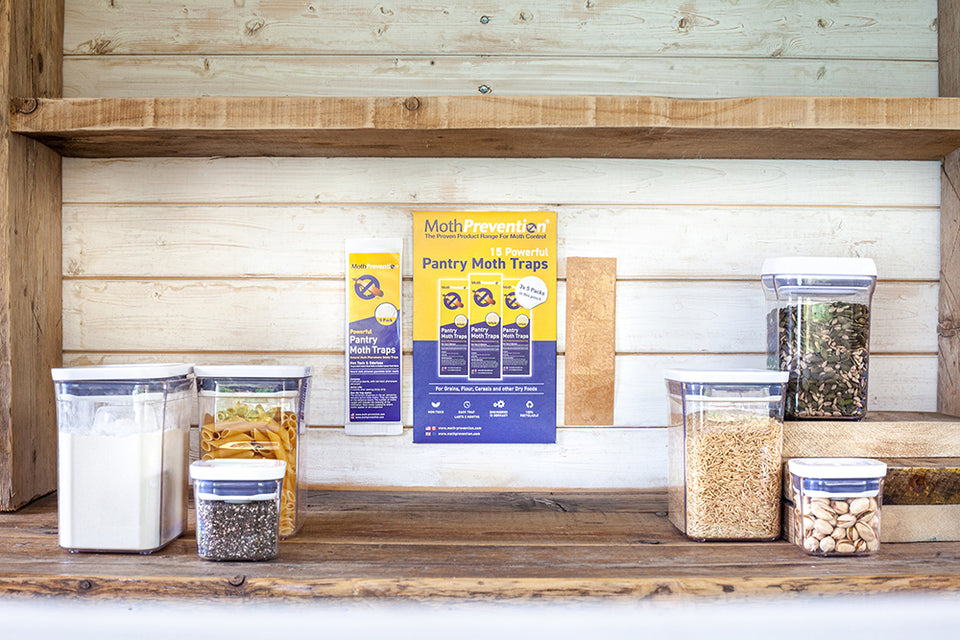
Pantry Moths (Plodia interpunctella) also infest homes and can be nearly as destructive as Clothes Moths. Like Clothes Moths, Pantry Moths do damage in the larval stage. However, unlike Clothes Moths, Pantry Moths damage and destroy your food items, particularly, dry goods. They feed on exposed grains, flours, cereals, and an array of other dry goods. These pests can even eat birdseed and pet foods! Other similarly destructive moths that are found in the US are Cadra cautella, Cadra figulilella. Ephestia kuehniella can be found worldwide.
Pantry Moths are Also Known as:
- Indian Meal moths
- Weevil moths
- Flour moths
- Grain moths
What can be done about Pantry Moth (Indian Meal Moth) Damage?
Unfortunately, most Pantry Moth Larvae damage can’t really be fixed. Any infested food items should be tossed in the waste bin. However, you can prevent Pantry Moths in your house by doing things like regularly inspecting stored goods, hanging Moth Traps or moth-repellent sachets, and spraying down shelves and crevices with a natural moth-killing spray To keep your dry goods safe from any further Pantry Moth invasions store them in air-tight containers.
Finally, if Pantry Moths happen to be a nuisance in the area where you live, inspect bags of birdseed, bulk flour, dry pet foods, etc., for signs of larvae before bringing them inside of your home.
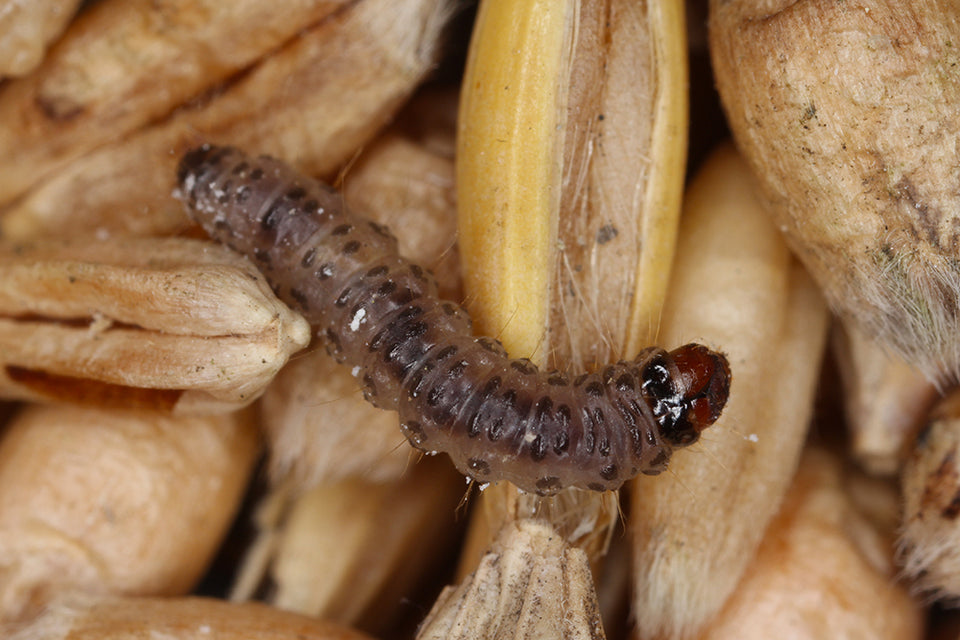
Clothes Moth Damage, Repair, Prevention, and Identification: In-Depth Answers
So how can you tell if you have a problem with Clothes Moths and what can you do about it? Can you repair the damage these moths cause and where should you start when it comes to ridding your home of these fluttery pests? The first thing to do if you have found Moth Damage on an item of clothing is to identify the origin of your problem.
You’ve got to stop the moths at their source and eliminate your infestation before even more destruction occurs. After all, you don’t want to be fixing one sweater while another is being eaten! Then, you can start making repairs if the damage isn’t too terribly extensive.
Finding Moth Damage On Clothes: What To Look For
So what does moth damage look like? Well, that will depend on the extent of the damage. In most cases, moth damage looks like small holes in your clothing. These holes can be less than 1 mm in diameter or as large as one or two inches. If an infestation is active enough, larvae can completely decimate an item of clothing until only shreds and excrement are left. If you have noticed small holes in your sweaters or silk items, start checking for other signs of moths.
Signs of moths in your wardrobe include:
- Small holes in clothes
- Dead (or living) larvae
- Moth casings or cocoons
- Sticky white web-like substances on the corners or drawers, hinges, etc.
- Dead (or alive) adult moths
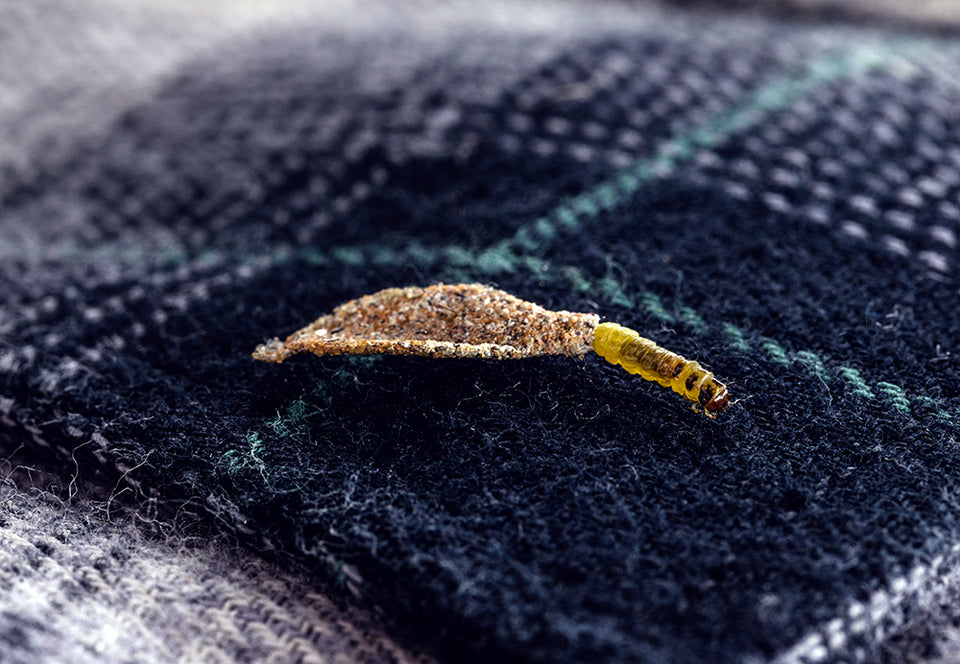
Identifying Clothing Moths
Clothing Moths are pretty nondescript. These moths are usually a golden\buff, tan or brown colour. In many cases, they have heads that are darker than their bodies or wings. These moths are less than ½ inch long as adults. Many species of Clothes Moths have tattered-looking wing edges and are relatively weak flyers. In the larvae stage, Clothes Moths start out tan or yellowish-white with dark-coloured heads. The larvae may darken in colour as they grow.
Can You Fix Moth Damage?
Yes, in many cases, you can fix moth damage by sewing the holes in items of clothing closed. If you are fixing damaged furniture, reupholstering is often an option as well. However, sometimes, items are very difficult to repair. With large items like carpets, repairs may not be feasible and replacement may be your best option. Sometimes, those who specialise in antiques will be able to offer moth damage repair services.
With extensive moth damage, it will all come down to what repairs are plausible, how damaged an item actually is, and whether material matches can be found. With little holes in your clothes, though,some neat sewing with a needle and thread can do the trick. Just be sure to get rid of any hidden moth eggs or larvae before you start. While you are at it, be sure that you have handled any kind of infestation to keep further damage from happening to the things you own.
Common Moth Damage Repair Solutions
If you have moth damage, there are lots of things to consider doing. Your options include but are not limited to:
- Sewing items up with matching thread
- Patching items with iron-on patches
- Sewing patches to cover large moth holes
- Reupholstering furniture
- Replacing certain areas in cloth with new cloth
- Having a seamstress or antiques expert help you
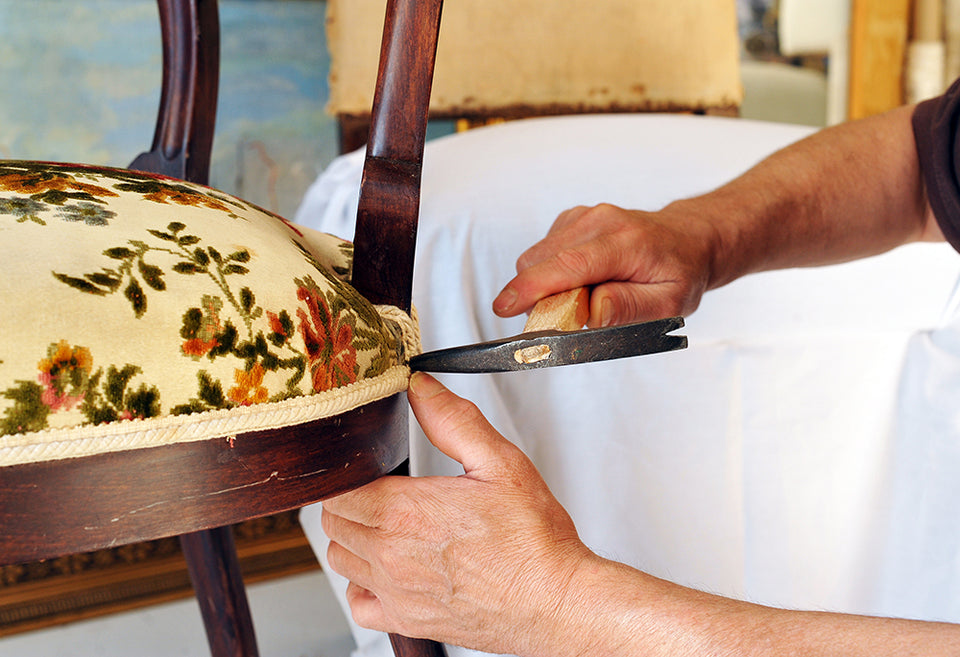
Iron-on patches can be great for larger moth holes. In many cases, these patches only take a few minutes to apply. For some denim items or even leather, patches can be great. However, an iron-on patch isn’t going to help your silk gown. For delicate items, damages to hems and edges may be hidden. Fraying and slight tears are also fairly easy to resolve. Extensive damage to delicate items may not be fixable.
If your furniture is damaged by moths, consider speaking with an upholstering specialist. Many companies offer upholstery repairs for moth damage. There are plenty of solutions to look into if you want to save a sentimental or valuable piece of furniture, so don’t lose hope!
Fixing Moth Damage To Clothes: Here's What to Know
So what to do about moth clothing damage? If it isn’t too severe, you can probably fix it! This is especially true with moth damage on wool since many woolen items can be resewn. However, silk, leather, and items with features such as embroidery can sometimes be very difficult to repair. It will all depend on how bad the damage is.
Moth Damage Clothing Repair Tips:
- Make sure to get rid of all larvae or eggs before starting repairs
- Freezing textiles for at least 72 hours kills eggs and larvae without causing more damage
- Many holes can be repaired with a needle and thread
- Some dry cleaners may offer moth damage repairs to clothes
- If an item is too damaged, it may cost more to repair than to replace
- Leather, silk, and sheer materials are particularly difficult to mend
- If you notice moth damage to clothes, always check for an infestation nearby and take measures to remove it entirely
FAQs On Moth Damage
Now, here are some concise frequently asked questions to help you out!
What damage can a moth do?
Moths can cause all kinds of problems. From damaging your sweaters to destroying entire carpets, the harm moths cause will depend on the extent of an infestation. Clothes Moth Larvae tend to destroy textiles while Pantry Moth Larvae defile dried food goods. Some moths also eat plants in the larval caterpillar stage.
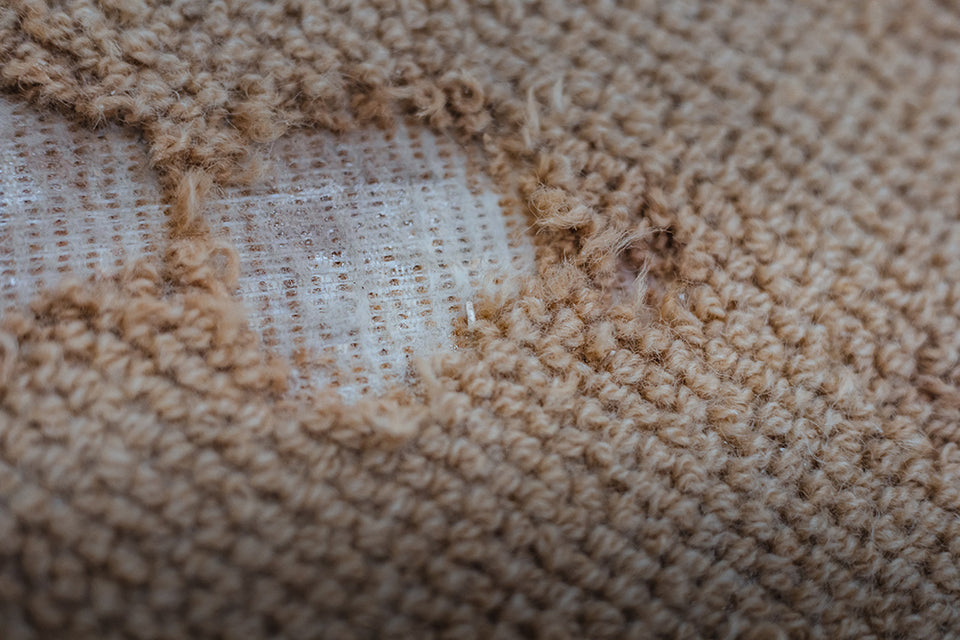
How do you get rid of a moth problem?
To get rid of moths, first, find the infestation. Then, identify the type of moth. From there, take all infested items and place them in air-tight containers or plastic bags. Freeze items for no less than 72 hours to kill moth eggs and larvae. Then wash and dry them or send them for dry cleaning if necessary. In the meantime, start cleaning any infested areas and furniture with moth-killing sprays. To deal with Pantry Moths you can use natural sprays found in our MothPrevention Pantry Moth Killer Kits. These Kits also contain Pantry Moth Traps which will help break the breeding cycle and continue to monitor for further moth presence.
To naturally keep moths away, moth-repellent sachets with herbs like cloves, lavender, and thyme are great. Also, you may want to consider installing cedar shelving in storage areas.
How much damage can a moth do to clothes?
Moth larvae may only chew a few holes through an item or they could totally annihilate it. It really depends on the extent of the infestation. As such, if you see signs of Clothes Moths, start taking steps to eliminate these pests straight away.
What causes moths in your house?
Moths can be attracted to lights, looking for a warm place to find shelter, or seeking a delicious food source such as your favourite wool sweater. It all comes down to the kind of moth. Clothes Moths are attracted to undisturbed places with lots of keratin (the protein found in animal fibres) for their larvae to eat. The same goes for Pantry Moths, except they prefer food sources of grains or dry goods for their larvae. To keep moths away, make sure to have screens on your windows and seal dry goods in air-tight containers. Moth deterrents (herbal sachets, cedar chips and shelving) can help you keep moths out of your wardrobe or linen closet.
Final Thoughts on How to Handle Moth Damage
So there you have it! If you find moth damage in your home, you should do everything you can to get rid of any kind of infestation right away. That way, you can save your other belongings. Then, you can start repairs. Moth Traps, natural herbs, and your freezer can be hugely helpful for eliminating moths. For repairs, a needle and thread and new upholstery can be the solution.. It will all come down to your unique situation.
All in all, the best way to handle moth damage is to:
• Know what kind of moth caused the damage and eliminate any infestation right away.
• Freeze the items you want to salvage first to kill any eggs or larvae.
• Choose the most sensible repair method for your damaged items.
• Protect your other belongings / prevent moths from returning using moth deterrents.
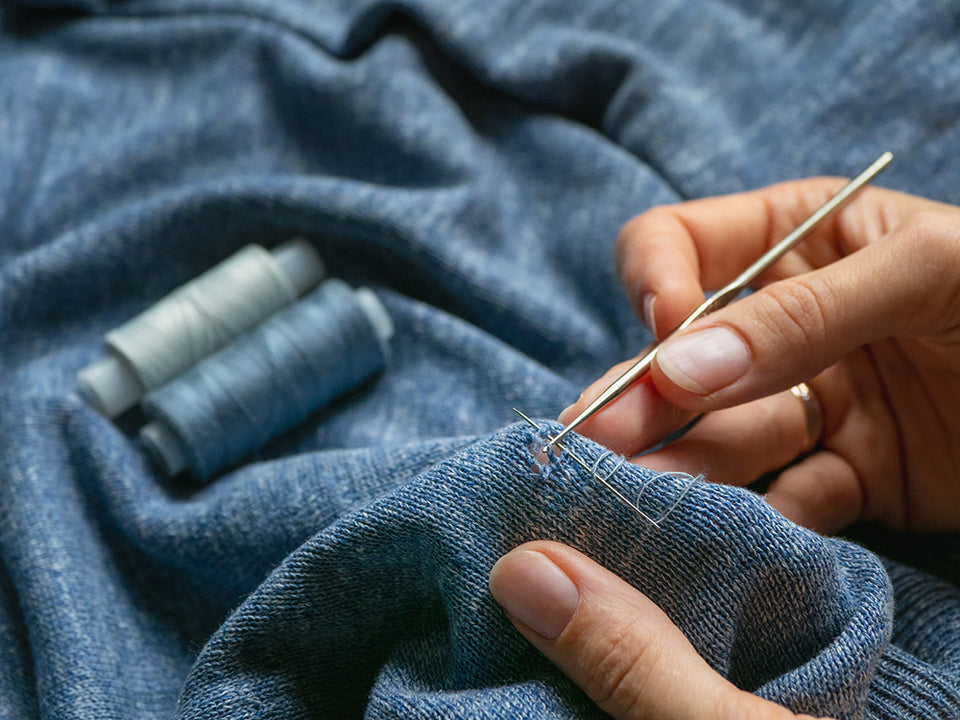
Hopefully, this article has given you some insight on moth damage to clothes and furniture and how to repair it. Remember, if the damage is minor, chances are, plenty of remedies will be available. So, keep your head up!
About MothPrevention
MothPrevention® speak to customers every day about their clothes moth issues - clothes moths are a species that are ever increasing and that can cause significant damage to clothes, carpets and other home textiles.
To date, we’ve helped over 250,000 customers deal with their moth problems. We have developed professional grade solutions including proprietary pheromones and trap design engineered to the highest production standards.





